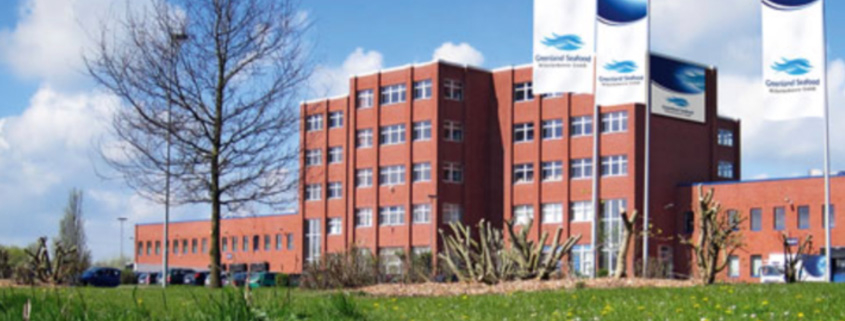Downstream, input sectors set to be focus of seafood M&A in 2021
With retail sales booming, processing consolidation will likely form the cornerstone of this year’s mergers and acquisitions (M&A) business, a trio of advisors told Undercurrent News.
Existing sector players, outside investors and alternative proteins are all likely to be pursuing closer retail access in the post-pandemic market, the M&A experts said.
When it comes to the processing sector, it’s here that you see the most fragmentation and the most family-owned businesses, according to Rabobank analyst Gorjan Nikolik. Combined with the
loss of demand for whole fish, that makes it an area ripe for consolidation.
“In recent times, retail has become really strategically important,” Nikolik told Undercurrent, noting that it had been difficult for companies to pursue major acquisitions during the pandemic.
“So 2021 will be potentially a year when a lot of things that people had on their mind will be executed.”
Unlike much of the rest of the sector, some processing firms have been reporting great figures during the pandemic, which in turn makes it the opportune moment for many of them to market their assets to interested buyers.
Considering this, Nikolik believes there are broadly two strategies that dealmakers will take in consolidating the sector.
Firstly, he notes, there’s a clear benefit in putting together processors who operate within the same region and sell to the same retailer; “then, you can become a kind of one-stop-shop to the retailer with a lot of different products”.
He notes this is something that both private equity firms and other protein conglomerates, such as Hilton Food Group, have already begun to attempt, adding seafood to their existing range of proteins.
In one such case, CapVest Partners, owners of pork processor Karro Foods, entered the sector with a deal for Young’s Seafood in 2018, before adding Greenland Seafood to create a $1.3 billion seafood business last year.
What makes this interesting is the different viewpoint that comes with other protein markets, Nikolik explained, where supply is often considerably higher than demand and retail access is king — an issue that only became a priority for the seafood industry in 2020.
“The animal protein sector values retail access higher than we typically do in seafood,” he explained. “They’re quite appreciative of our brands and of our processors; it’s maybe why they’ve often been the winning bidders in the last couple of years.”
The second strategy is more of a specialist play, he continued, where processors with a strong presence in a particular species will be looking to expand globally by acquiring similar players in other parts of the world.
“Typically, that synergy is on either the sourcing side or the technology side, where you have something of an advantage — you can enter into another market by acquiring a local player, but bringing your expertise.”
But it’s not just going to be outside investors interested in building seafood processing empires, according to Jorgen Horntvedt from Alpha Corporate Finance.
“I think farmers will also move into the category, acknowledging that they need to be involved there,” Horntvedt said. “The byproduct category from the processors will also bring higher value — so downstream [investment] makes sense if you have the right management team to do it.”
Given that many producers will be reserving capital at present, Horntvedt noted that he saw salmon farming cooperatives like Salmon Group becoming more prevalent, as small-scale farmers look to pool resources to compete.
“There could be more going together in constellations like that to buy more value-added capacity,” he told Undercurrent.
Besides farmers, Horntvedt also noted that more peripheral firms, such as feed suppliers and aquatech developers, may also be looking to get more involved in the supply chain.
Already this year, US feed giant Cargill has announced its own plans to move deeper into the supply chain, and Horntvedt believes they won’t be alone.
“There will be many other feed companies, fishmeal and oil producers, technology providers that would say, how can we secure a little bit more of this value chain so that we are not vulnerable again if things turn,” he continued. “There is the danger that these things will be repeating themselves on a more long-term basis.”
Will there be a surge of deals this summer?
One of the biggest question marks over 2021 is what can be expected in the summer months, once lockdowns are ended and visiting desirable acquisition sites becomes viable again.
Nikolik said the summer could well see many deals come to fruition in quick succession.
“I think that there’s a lot of things in 2020 that got delayed and postponed and people are just waiting for the situation to de-risk and also just to be able to meet and see things,” he explained.
“So you could indeed see a flurry of activity at some point, but whether it’s going to be early 2021 or maybe later, I wouldn’t know.”
This is unlikely to be the case upstream, however, as he points out that with much of the industry dealing with lower margins, this year won’t be a good time to sell.
“It’s more likely that, if we saw a big turnaround in demand, then that could happen. Say in June, if we’ve vaccinated really well and people are going to restaurants, prices shoot up all over the place — then you would need a couple of quarters of really good performance before raw material producers would say this is the new normal now.”
Birgir Brynjolfsson of US-based Antarctica Advisors told Undercurrent that his firm expects to see many of the largest consolidators accelerating deals that had been advanced remotely during the summer, particularly cross-border transactions.
“M&A activity has been very strong due to low interest rates, abundant capital and favorable tax environment in the US,” he said. “We are expecting that trend to continue into the summer months and once the dust settles, and we are on the other side of COVID, there may be a number of companies that will feel more comfortable looking to grow through M&A that will take advantage of increased interest from buyers.”
In the US, Brynjolfsson noted the strong possibility that the policies of the new Biden administration could also spur on early M&A activity after the low-tax Trump years.
“If the new US administration raises taxes, then that could have negative impact on future valuations,” he told Undercurrent. “If business owners want to exit, they should be looking at doing that sooner rather than later.”
Could alternative feeds be next to hit stock markets?
With the last part of 2020 marked by a sudden flurry of land-based farmers pursuing private placements, one of the other most pertinent questions at present is exactly how long the aquaculture sector will attract such a scale of capital market interest.
According to Nikolik, the surge of investment was down to several interlinked factors.
“On one side, there was quite a lot of capital available and also very few opportunities for people with capital to invest that somewhere,” he explained. “Shares are overpriced. There are only a few deals out there. Bonds don’t yield anything, saving accounts don’t yield anything. The governments were pumping money into the economy and people were saving money, money which also goes into the investible capital for certain banks and even for individuals.”
“And in aquaculture, it coincides that we’ve reached a point where our RAS [recirculating aquaculture systems] and technology platforms have just got to the right size and maturity level now. So it’s an excellent window of opportunity.”
Interestingly, the involvement of investment funds in the sector isn’t likely to be going away anytime soon, according to Brynjolfsson, who noted there is now greater appreciation for seafood as a valuable and resilient addition to portfolios.
“There seems to be a lot of interest from PE [private equity] funds and institutional investors to deploy capital into inland aquaculture, but we have yet to see the success of those opportunities materialize,” he said.
“In our experience the institutional investors are getting more knowledgeable about the industry and we expect that we will see more activity from them in coming years; also, most of them are underinvested in seafood as an asset class.”
With so much success enjoyed by land-based farmers, Nikolik also questioned whether other technologies may follow them this year into the world of private placements.
“What I’ve been waiting for, but which hasn’t happened yet are the alternative feed ingredients,” he told Undercurrent. “In that sector, you have things like insects, microbials, algae, and all of these are very sustainable products that potentially have a lot of demand and they need quite a lot of capital.”
“We get many requests for capital from these companies, and I find them to be a similar risk profile as RAS, but somehow the land-based players are the really hot topic right now,” he continued. “Yet I think it’s a very interesting subject area — so perhaps in the future, we’ll see them in another flurry of placements.”



